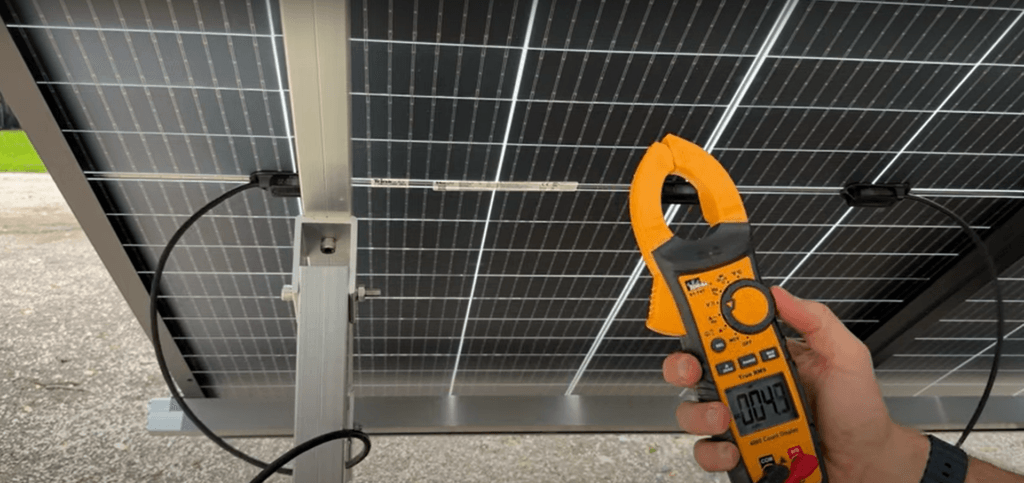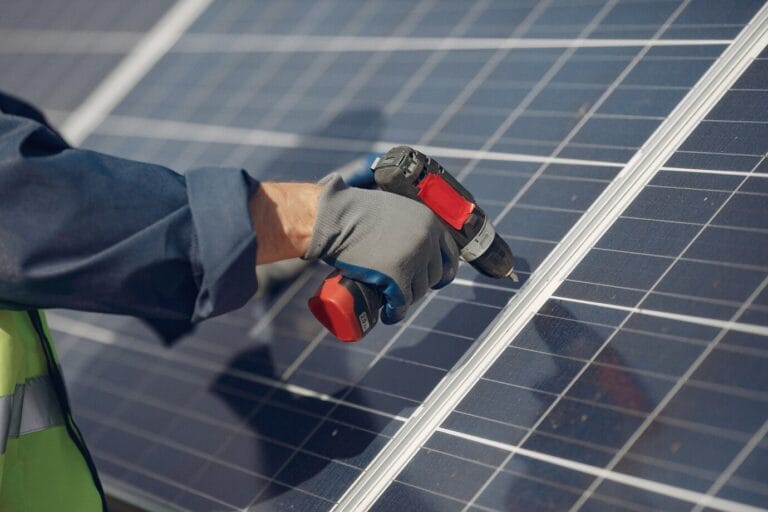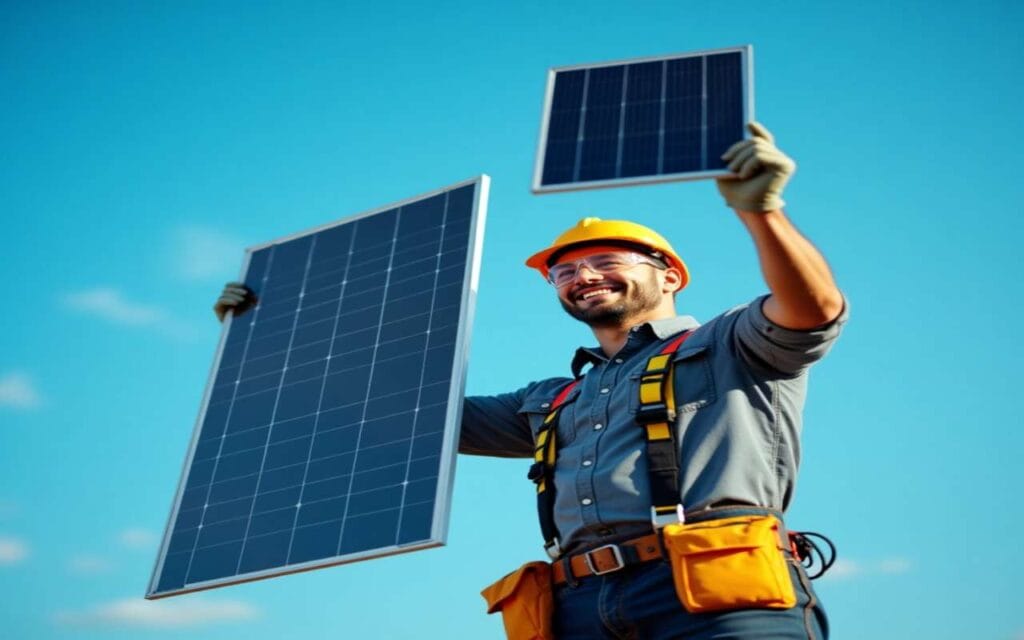As interest in solar power continues to grow, people often ask:
👉 “Can I connect solar panels of different wattages, voltages, and currents in my solar system?”
Whether you’re upgrading an existing solar setup that uses different panel types or attempting to reutilize an old solar panel to power a new system, this guide will teach you everything you need to know about connecting different solar panels together — why it isn’t recommended, when and how it can be done safely, and what the best alternatives are so that you don’t end up losing power in your system or damaging your setup.
If you are wondering how to connect solar panels of different voltage safely or mixing different watt solar panels, this guide has everything you need — including real-life examples, expert tips, and frequently asked questions.
Before we dive into how to safely connect different panels, if you really have to, let’s look at why mixing different watt solar panels is generally a bad idea — particularly for beginners and for people wanting to maximize efficiency.
Disclaimer: This guide is for informational purposes only. Always consult a qualified solar professional before making changes to your solar system.
1. The System Will Operate at the Capability of the Weakest Panel

A 300-watt panel connected with a 100-watt panel means your system will be down-graded to work at 100 watts. Which means you’re throwing away 200 watts of possible power — a big squandering of funds and energy.
Example:
In the case of a 300W and a 100W panel wired together in a series circuit, these will ultimately be limited by the smallest panel in the chain as they are wired in series (which limits the total output to the smallest panel in terms of current (amps) versus in a parallel circuit limiting volt output (volts).
2. Mismatch Causes Imbalance, Overheating, and Potential Damage
When panels with different voltages and currents are connected directly:
- Higher voltage panels can “force” current into lower voltage panels, causing them to overheat.
- Charge controllers and inverters may receive unstable input, reducing their lifespan or causing failure.
Solar panel maintenance becomes more complicated when dealing with an unstable system — reducing your return on investment (ROI).
3. System Design Limitations and Lower Efficiency
Most solar systems are tailored for a particular voltage and current combination.
- Mismatched panels cause confusion for the MPPT (Maximum Power Point Tracking) of your charge controller.
- If panels are mismatched, it will lead to voltage and current fluctuations, which the inverter does not translate → less output.
Combining varying watt solar panels is contradictory to the goal of getting reliable and efficient solar production.
Is It Possible to Use Different Solar Panels Together? The Safe Way to Do It
Now, let’s say you already have different solar panels, and you don’t want to waste them. Can you combine different solar panels? Yes — but only with precautions.

Solution 1: Have Separate Charge Controllers for Each Type of Panel
The most efficient and safe method to use mismatched panels is to connect each set of just similar panels to its own charge controller.
Example Setup:
→ 100W panel + 10A MPPT controller → Battery bank
300W panel + 30A MPPT controller → Same battery bank
That way both charge controllers can optimize the performance of their respective panels and charge the battery without any conflict between them.
Key Benefit: You avoid underutilizing larger panels and prevent damage to smaller panels.
Solution 2: Use Panels with Matching Voltages in Parallel (Still Risky)
If the panels have the same voltage, but different wattages, you can connect them in parallel — but even then, I would not recommend doing this without carefully planning the connection.
For Parallel Connections:
- Voltage MUST be the same across all panels.
- Currents (Amps) will add up.
Warning: If voltages are slightly different, the lower-voltage panel will “drag down” the higher-voltage panel, leading to reduced output and possible overheating.
What Happens When You Mix Solar Panels with Different Ratings?
Different Wattages:
- The panel with lower wattage limits the total system output.
- System wastes the excess capacity of larger panels.
Different Voltages:
- In parallel: Voltage must match, or power losses and damage occur.
- In series: Current limited to smallest panel, and higher voltage panels may “overwork” smaller ones.
Different Currents (Amps):
- Connect in series: As limited by the panel with the least current.
- Parallel: The probability of overloading the smaller panels and the voltage drop.
Expert Advice: When to Mix Solar Panels & When Not to
| Situation | Recommended? | Notes |
|---|---|---|
| Panels of same watt, volt, amp rating | ✅ Yes | Ideal for series or parallel. |
| Different watt but same voltage (parallel) | ⚠️ Possible, but not ideal | Larger panel underperforms. |
| Different voltage panels | ❌ No (unless separate controllers) | Unsafe to mix directly. |
| Different watt, volt, amp (fully mismatched) | ❌ No, avoid | Major risks and inefficiencies. |
| Connecting old and new panels | ✅ Only via separate charge controllers | Safest method. |
Maintenance of Solar Panel systems with Different panels
If you absolutely have to mix and match panels, regular maintenance becomes important:
1. Monitor Panel Output Per Item
- Solar monitoring tools can record the voltage, current and wattage for each solar panel.
- Keep an eye out for poorly performing or overheating panels.
2. Check Wiring and Connections
- Look for corroded terminals, loose connections and damaged cables — especially in mixed setups.
3. Do not let debris get stuck on the panels
- Opening for timing, regular cleaning improves efficiency.
- Pollution and slam keep leaving the panel surface less suitable for smaller panels in mixed systems.
4. Assess the health of the charge controllers
- Make sure every controller has enough going on, and isn’t overloaded.
Pro Tip: A properly maintained solar system can increase power output by 10-20%, which makes regular maintenance for solar panels a necessity — especially when mixing panels.
Final Word: Is It Okay to Connect Solar Panels of Different Watt, Voltage, and Current?
- No, it is not advisable to mix solar panels of different watt, voltage and current.
- In case you need to join them, use individual charge controllers for each panel type.
- Do not directly connect mismatched panels in series or parallel — it produces inefficiencies, hazards, and damage.
To avoid problems and inefficiency in your solar system, purchase matching panels, and enlist a professional for your system design.
Related searches and resources
- How to connect solar panels in a safe way
- Alternate Solar Charge Controllers for Mixed Panels
- Parallel wiring of different watt solar panels
- Connecting together different voltage solar panels
- Different sizes of solar panel systems maintenance
Did you find this guide useful, share with your Friends and Family who are planning on solar project and check out our other expert guides to solar energy tips, solar panel maintenance help and tips to get the most from your solar.
If you need a wiring diagram with connector picture for mixed panels? Let me know!
Disclaimer:
This article is for informational and educational purposes only and is not professional advice. It is dangerous to connect solar panels of different wattages, voltages, or currents unless you know what you are doing, and incorrectly connecting your solar equipment can lead to damage to your solar equipment, fire, and personal injury. This advice are for informational purposes only and, as always, consult a licensed solar installer or qualified electrician before attempting any solar panel installation or modification. The information provided herein is for informative purposes only and the author and publisher of this material accept absolutely no responsibility for any damages incurred from the used or misuse of the information presented herein.
Author
Top Solar Picks, founded by John, a Solar Energy Writer and Researcher with over 12 years of experience in renewable energy, is dedicated to helping homeowners and businesses make informed, data-driven decisions about solar power. John’s expertise and research pr...

